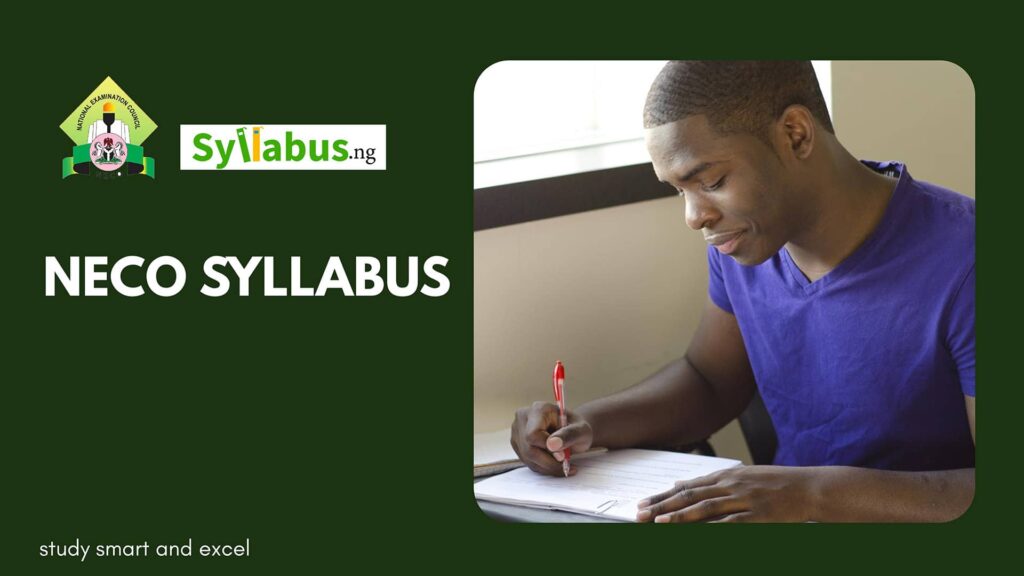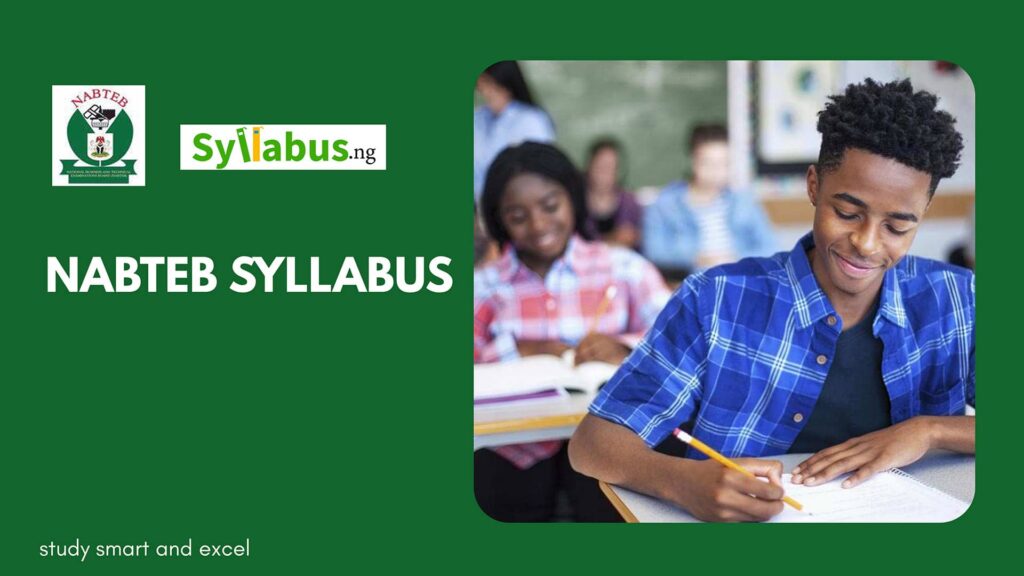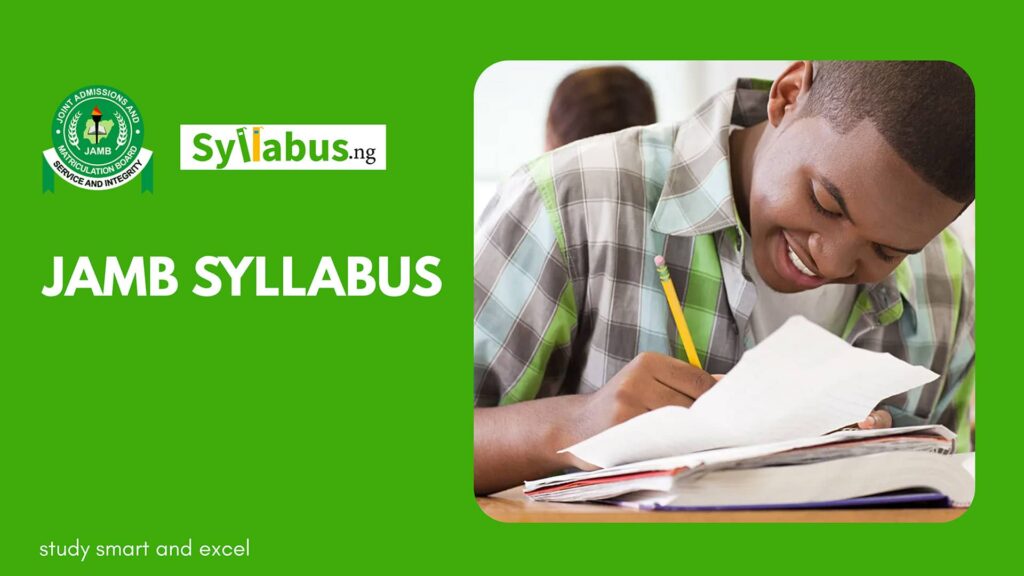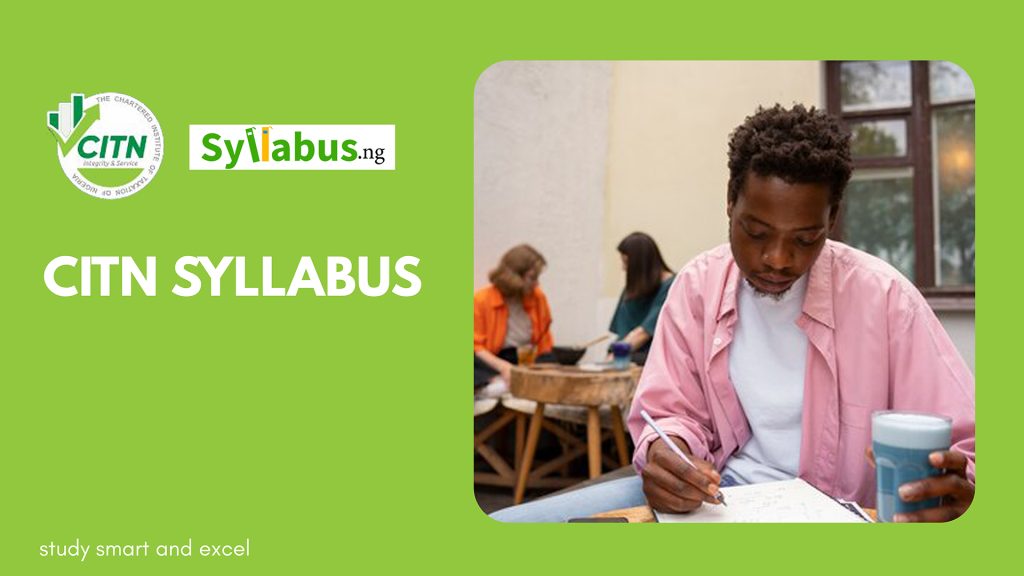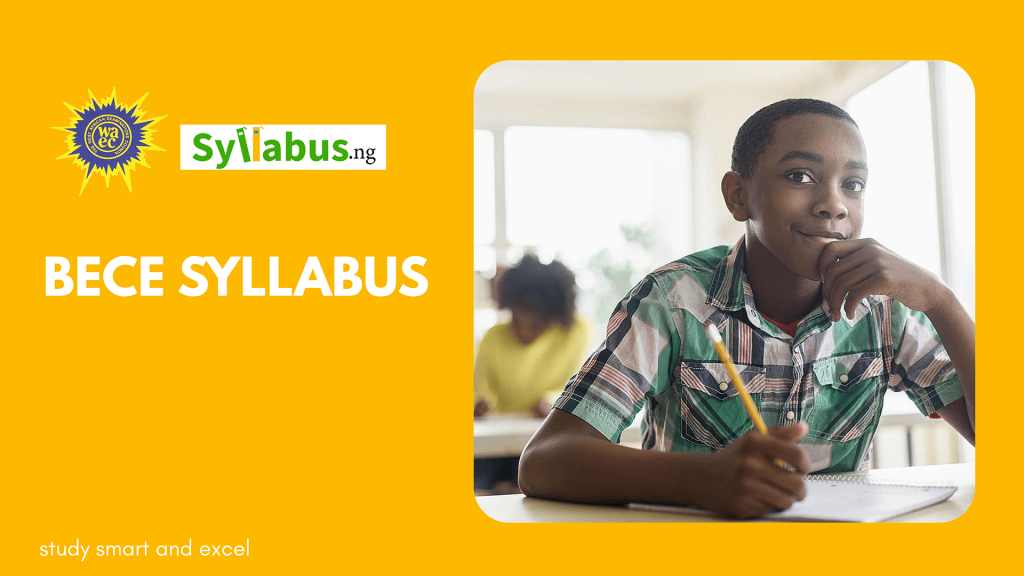NECO Physical Education Syllabus
Are you writing Physical Education in your NECO O’level exams? Download the recommended Physical Education syllabus to excel in your exams.

Home » NECO Syllabus » NECO Physical Education SyllabusAbout NECO Physical Education Syllabus
Will you be writing Physical Education in the upcoming NECO exams? Then this NECO PHE syllabus is for you.
This syllabus for Physical Education tells you all you need to know about the upcoming exams. From the topics to the objectives down to the recommended textbooks, you can read with. It is a valuable resource that you and your classmates will enjoy having so do well to share this with them.
Reading this syllabus and practicing your past questions will give you an edge over other candidates who focus on just their school notes and materials.
The NECO Physical Education exams will test you based on:
i. your understanding of movement activities and the relationships between movement and concepts from biological, physical and social sciences;
ii. skills needed in basic motor activities, fitness, maintenance and self awareness; an appreciation of the role of movement and physical activity in human development;
iii. Your understanding of physical activity and exercise as tools for health and wellness promotion.
Marking Guide & Sections
Here’s what to expect from the NECO Physical Education Exam. It’s broken down into three papers: Papers 1, 2, and 3.
Let’s talk about each one and how they work together.
Paper 1: Multiple-Choice
This paper is all about speed and accuracy. You’ll face 50 multiple-choice questions, each with a single correct answer. You have 50 minutes to finish, which means you get about a minute for each question. If you know your stuff, this should be a great opportunity to rack up 50 marks. The best advice here is to stay calm, and read each question carefully.
Paper 2: Short Essays
This paper is broad, It has four sections, each covering a different aspect of physical education. Here’s the breakdown:
Section A: Athletics, ball games, and racket games. This section has three questions, and you’ll pick two to answer. Each question is worth 10 marks, for a total of 20 marks.
Section B: Foundations of physical education. You’ll have two questions and will answer one. This section is worth 10 marks.
Section C: Basic human anatomy and physiology in physical education. Similar setup to Section B: two questions, answer one for 10 marks.
Section D: Sports administration and competitions. Just like Sections B and C, you answer one question for 10 marks.
So that’s a total of 50 marks for Paper 2. You have 1 hour and 20 minutes to complete this paper. The key here is to manage your time well. Don’t spend too long on any one question, and make sure to fully answer each one.
Paper 3: Practical Examination
Paper 3 is the practical examination where you need to show what you can do. This paper is broken into four sections, each focusing on different practical skills:
Section A: Athletics (Track and Field events). There are three questions, and you’ll answer two. Each question is worth 25 marks, giving you a total of 50 marks.
Section B: Ball games. You answer one question out of two, for 20 marks.
Section C: Racket games. Same setup as Section B: one question out of two, also for 20 marks.
Section D: Gymnastics. Here, you answer one out of two questions, each worth 10 marks.
For Paper 3, the total is 100 marks, and each candidate gets up to 2 minutes (120 seconds) to display their gymnastics. Just remember to stay focused and give your best effort during these practical assessments. They are designed to test not just your knowledge but your practical skills as well.
Download NECO Physical Education Syllabus
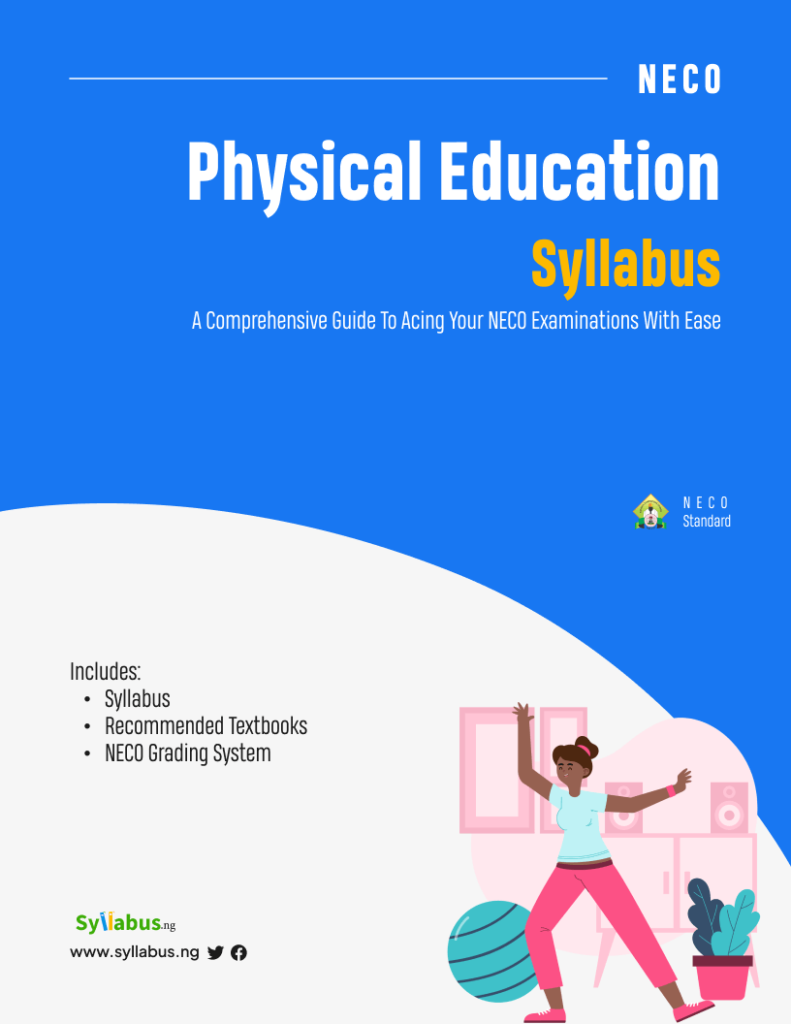
Best candidates excel because they study smart and hard. Know what’s expected of you.
Download the NECO recommended Physical Education syllabus.
The NECO Physical Education Syllabus
| PHYSICAL EDUCATION | ||
| SN | TOPICS | OBJECTIVES |
| 1 | Principle of Philosophy of Physical Education | 1.1 Philosophy of Physical Education (a)Principles and philosophies of founding fathers (b) Changes in concept of physical Education (c) Education of the physical and education through the physical 1.2 Physical education ideologies (a) nationalism and patriotism in physical education and sport. (b) national ideologies 1.3 Recreation (a) Definition and importance (b) Types of recreational activities (i) indoor (ii) outdoor (c) Recreational activities: Walking, jogging, swimming, cycling, playing musical instruments, table tennis, camping etc. (d) Differences between recreational activities and lifetime sports. 1.4 Intramural and Extramural activities And tournament (a) Definitions of (i) intramural activities (ii) extramural activities (b) Benefit of intramural and extramural activities (c) (i) Definition of tournament (ii) Types of tournament 1.5 Traditional sports in West Africa (a) Origin of traditional sports in West Africa countries (b) types of traditional sports in respective different West African Countries (c) values of traditional sports 1.6 Greek Festivals and The Olympic Games (a) Greek Festivals: (i) Usthman, Pythian, Nemean and Olympian (ii) Ancient Olympic Games (b) The modern Olympic Games |
| 2 | National and International Sport Competition | 2.1. Sports Championship at national level (a) organization and administration 2.2 Types of championship (a) national championship organized by different sports associations/federations (b) national championship organized by corporate organizations (c) the national sports festival 2.3 Institutional sports (a) the universities games (b) the polytechnic games (c) colleges of education games (d) national school sports federation International Competitions (a) The F.I.F.A World Cup (b) The Olympic/Paralympic Games (c) Commonwealth Games (d) All Africa Games (e) world Athletics Championship (f) World Swimming Championship 4. The All African Games (a) history of All Africa Games (b) reasons for disparity in the timing of the games (c) history and activities of supreme Council of sports in African (SCSA) |
| 3 | Basic Human Anatomy and Physiology | 3.1. Skeletal System (a) main parts and functions of the human skeleton (b) bones and joints involved in movement. 3.2 Nervous System (a) the brain (b) the spinal cord (c) the nerves 3. Circulatory System (a) the hearts muscle (b) effects of exercise on the heart (c) the blood circulation (d) function of blood (e) types of blood circulation 3.4 Respiratory System (a) the trachea, lungs and nose (b) the functions (c) types of respiration (d) aerobic and anaerobic sports 3.5 Skeletal muscles (a) major muscles of the body (b) types of muscle contraction (c) muscle cramp, cause, prevention and first aid. 3.6 Somatotype (a) description of the various body type (b) relationship between body type and physical activities and sports 3.7 Posture (a) correct posture (b) postural defects |
| 4 | Practice of Athletics, Games and Dance | 4.1 Athletics (Track and Field Events) A. Track Events (a) Short distance races (sprints) 50m, 100m, 200m, 400, hurdles and relay races. (b)Sprint start: bullet/bunch. medium and elongated (c) relay races (d)hurdle events (high and low) (i) middle race (800m, 1,500m, country (iii) long distance races (3,00m, 5,000, 10,000m) and marathon (iv) phases of running (v) rules and regulations (vi) officiating (ii) 3000 steeple chance cross country (iii) long distance races (3,00m, 5,000, 10,000m) and marathon (iv) phases of running (v) rules and regulations (vi) officiating 4.2 Field Events (i) throwing events: discus, javelin and shot put (ii) jumps: high jump, long jump, triple jump and pole vault (i) equipment and specification (ii) techniques (iii) rules and regulations (iv) officiating 4. 4. Games A. Ball games (i) (a) football (b) basketball (c) volleyball (d) hockey (e) handball (ii) rules and regulations of each game (iii) Officiating 4.5 Racket games (a) tennis (b) table tennis (c) badminton (i) Specification of court/table of all games; (ii) types of equipment used; (iii) skills involved in each game; (iv) rules and regulations (v) officiating 4.6 Traditional dances (a) dances from the regions of each country (b) costumes for various dances (c) types of traditional dance and dance step |
| 5 | Physical Fitness and Conditioning | 5.1 Physical fitness (a) Definition of physical fitness (b) Components of physical fitness (c) Examples of health related and performance/skill related components of physical fitness (d) Benefits of physical activity, exercise and physical fitness 5.2 Health and Personal hygiene (a) importance of health in physical education (b) care of the body (c) sportswear |
| 6 | Drug, Nutrition and Sport | 6.1 Nutrition (a) classes of food nutrients (b) balanced diet (c) dietary consideration in sports 6.2 Drug in sports (a) meaning of drug (b) types of drug (c) drug use and misuse (d) the effect of drug on sports performance 6.3 Sports injuries (a) Common sports injuries (i) dislocation (ii) sprain (iii) strain (iv) fracture (v) bruise (vi) cramp (b) First aid and first aid box (i) Special conditions and solutions that require first aid (ii) Sportswear 6. 4 Corrective and adapted physical education programme (a) Definitions (b) Categories of people with special needs (c) Corrective exercise (d) Activities for the special needs (e) Social and emotional problems of the special needs: Heat stroke, heat exhaustion, drowning shock, fainting, muscle fatigue |
| 7 | Sport Administration | 7.1 Administrative structure/functions of sports at national, regional/state and local government level. 7.2 Administrative structure/function of sports at institution level. |
Recommended Texts For NECO Physical Education
All NECO Syllabus
Frequently Asked Questions About the NECO Physical Education Exams
The exam has three papers; Papers 1, 2, and 3. Papers 1 and 2 are taken together, and Paper 3 is a separate practical exam. Paper 1 is multiple-choice, Paper 2 has short-structured and essay questions, and Paper 3 is a practical test. Each paper has its focus and style, so you’ll need to be prepared for all of them.
To prepare for the practical test in Paper 3, it’s important to get practical experience. If you’re a school candidate, your teacher might organize practical sessions where you can practice using the necessary tools and techniques. For private candidates, you might need to find alternative ways to practice even though your practical test will be in an essay format.
Paper 1 is all about quick thinking and choosing the correct answer from a list of options. The best way to study is to focus on the core concepts and practice with multiple-choice questions. Try using flashcards, taking practice tests, and reviewing past exam papers to get a feel for the types of questions you’ll encounter.
You can improve your writing skills by practising answering some essay questions. Start by outlining your answers before you write them to ensure your ideas are organized. Make sure you understand the topic and use examples to support your points. It’s also a good idea to practice writing essays within the allotted time to get used to the exam conditions. Don’t forget to proofread your work for spelling and grammar errors.
For Paper 1, read each question carefully and think about what they are asking. If you’re stuck, try to eliminate obviously wrong answers to improve your chances of guessing correctly. For Paper 2, make sure to structure your essays clearly and back up your points with examples. In Paper 3, stay calm and focus on your technique. Remember, this is your chance to show what you can do.
The entire exam takes place over a period of time, with Paper 1 and Paper 2 being taken together at one sitting, and Paper 3 happening separately as a practical test. Each paper has a specific time limit: 50 minutes for Paper 1, 1 hour and 20 minutes for Paper 2, and varying times for Paper 3 depending on the activity. Make sure you know the schedule, and arrive on time for each session.
Here’s the breakdown: Paper 1 has 50 multiple-choice questions, each worth one mark, for a total of 50 marks. Paper 2 consists of essay questions, with a total of 50 marks as well. Paper 3, the practical exam, has various sections, with a total of 100 marks. That adds up to a combined total of 200 marks for the entire exam.
Download NECO Physical Education Syllabus

Best candidates excel because they study smart and hard. Know what’s expected of you.
Download the NECO recommended Physical Education syllabus.



